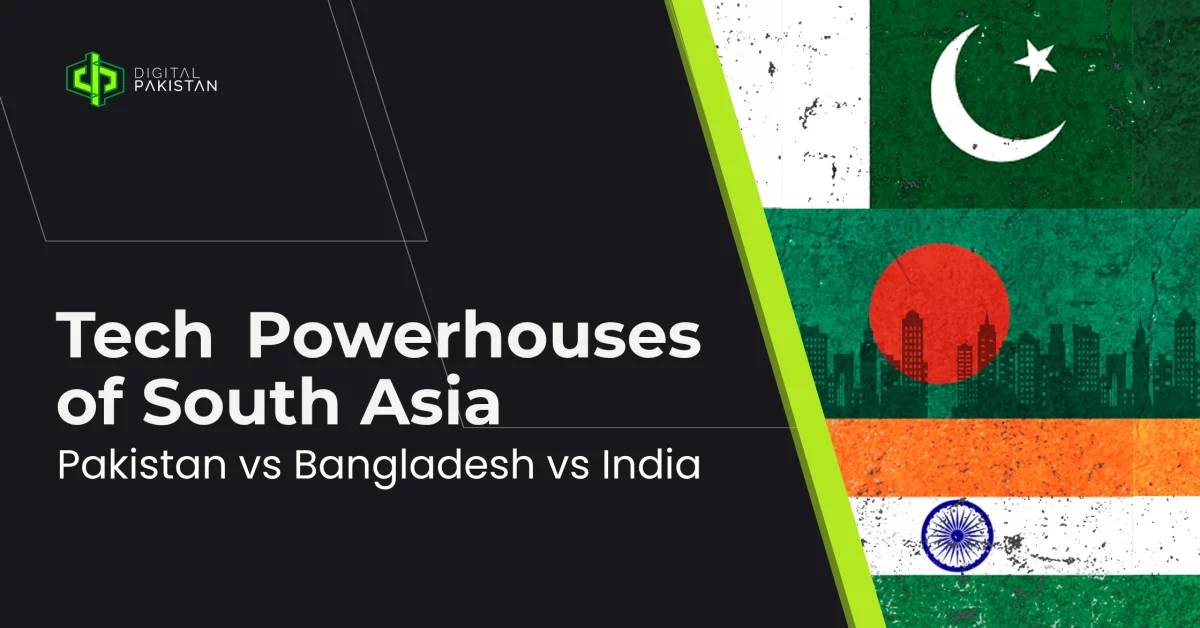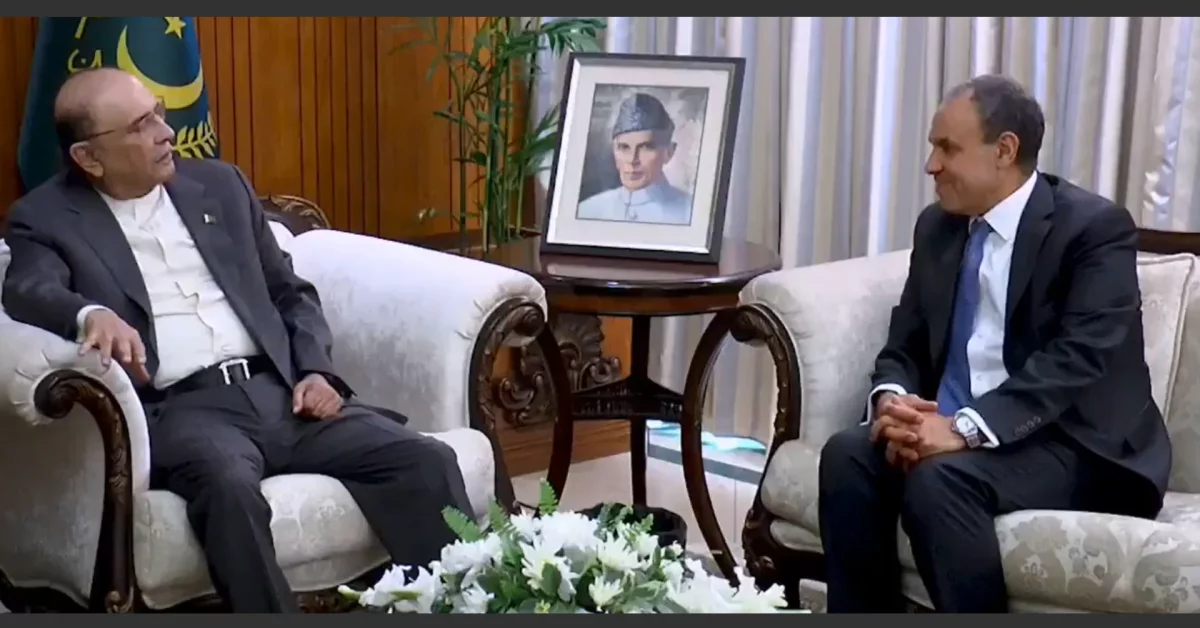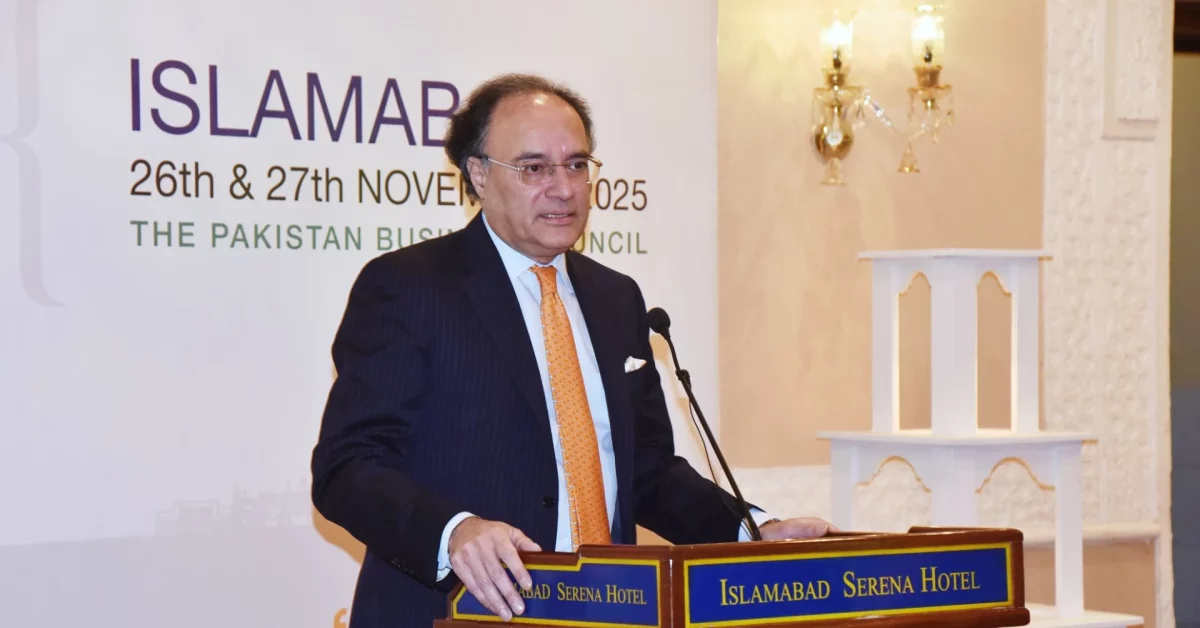
Aurangzeb Promotes Pakistan’s Investment Potential in Washington
October 17, 2025
Pakistan Seeks China’s Support for BRICS Bank Membership
October 18, 2025Pakistan vs Bangladesh vs India Tech Comparison Guide
The Pakistan Bangladesh India tech comparison isn’t just about three neighboring countries fighting for digital dominance. It’s about understanding how three nations with shared history, similar challenges, and wildly different approaches are carving their spots in the global tech map. While India’s been flexing with unicorns and billion-dollar exits, Pakistan and Bangladesh are playing their own games, quietly building ecosystems that might surprise you.
South Asia’s tech story reads like a family drama where one sibling became a CEO, another’s grinding in a garage startup, and the third is figuring out their path. No two trajectories are the same, and that’s what makes this comparison actually interesting. Let’s break down what’s really happening beyond the headlines and LinkedIn hustle culture posts.
Indian tech ecosystem
India’s tech ecosystem doesn’t need introduction. It’s the main character energy of South Asian tech, the one everyone compares themselves to, and honestly, the benchmark whether you like it or not.
Market size and growth
India’s tech industry is worth over $250 billion and growing at a pace that makes other countries jealous. The IT services sector alone contributes around 7.5% to the GDP. We’re talking about an ecosystem that generates more than $200 billion in annual revenue from IT and business process management exports. The domestic tech market is expanding too, with digital adoption accelerating across tier-2 and tier-3 cities.
The growth isn’t slowing down either. Projections suggest India’s tech sector could hit $350 billion by 2026. That’s not hype, that’s infrastructure, talent, and decades of positioning paying off.
Key tech hubs and cities
Bangalore is the obvious answer, but India’s tech scene isn’t a one-city show anymore. Hyderabad’s giving Bangalore serious competition with its Microsoft and Google presence. Pune’s carved a niche in IT services and automotive tech. Mumbai’s got the fintech crowd. Delhi-NCR (Gurgaon and Noida) hosts everyone from startups to MNC headquarters.
Then there’s the rise of tier-2 cities: Indore, Jaipur, Kochi, and Chandigarh are becoming legitimate tech destinations. Lower costs, better quality of life, and remote work culture are redistributing talent across the country.
Startup landscape and funding
India’s startup ecosystem is third globally, behind only the US and China. Over 100 unicorns call India home. In 2021 alone, Indian startups raised $35 billion. Even after the funding winter hit in 2022-2023, India’s still pulling in billions annually.
The startup scene covers everything: fintech (Paytm, PhonePe), edtech (BYJU’S, Unacademy), e-commerce (Flipkart, Meesho), SaaS (Freshworks, Zoho), and social commerce. Venture capital firms, both domestic and international, are constantly hunting for the next big thing. Angel networks and accelerators like Y Combinator India, Sequoia Capital India, and Tiger Global are deeply embedded in the ecosystem.
IT services and outsourcing sector
This is India’s bread and butter. Companies like TCS, Infosys, Wipro, HCL, and Tech Mahindra are household names in enterprise IT. India handles a massive chunk of global outsourcing, from software development to customer support to complex data analytics.
The services sector employs over 5 million people directly and supports millions more indirectly. It’s the foundation that bankrolled everything else in Indian tech. While startups get the glamour, IT services are the steady cash cow keeping the lights on.
Emerging technologies and innovation
India’s not just doing outsourcing anymore. AI and machine learning labs are popping up everywhere. Bangalore hosts research centers for almost every major tech company. AI startups are working on everything from healthcare diagnostics to agricultural solutions.
Blockchain adoption is growing, especially in supply chain and finance. The government’s pushing digital infrastructure hard with initiatives like India Stack, UPI (Unified Payments Interface), and Aadhaar integration. India processes billions of digital transactions monthly, more than most developed countries.
Quantum computing, 5G deployment, and deeptech startups are emerging. The innovation’s real, not just buzzwords for pitch decks.
Pakistan’s tech industry
Pakistan’s tech scene is the underdog story. Smaller budget, tougher challenges, but punching above its weight in specific areas.
Current market status
Pakistan’s tech industry is valued at roughly $3.5 billion, primarily driven by IT exports and a growing startup ecosystem. The sector’s been growing at 20-25% annually, which sounds impressive until you remember it’s starting from a much smaller base than India.
IT exports crossed $2.6 billion in 2023, a significant jump from previous years. The domestic digital economy is growing too, with e-commerce, fintech, and digital services gaining traction. But let’s be real: infrastructure gaps, political instability, and economic volatility keep throwing curveballs.
Tech hubs and development centers
Karachi, Lahore, and Islamabad form Pakistan’s tech triangle. Karachi’s the financial hub with a strong fintech and e-commerce presence. Lahore’s got the creative and development talent, hosting agencies, game dev studios, and software houses. Islamabad’s become the startup capital with the cleanest infrastructure and government proximity.
Cities like Faisalabad, Peshawar, and Multan are developing smaller tech clusters. Software houses in these cities offer competitive rates and solid development work, though they lack the ecosystem depth of major hubs.
Startup ecosystem and investment trends
Pakistan’s startup scene exploded around 2020-2021. Companies like Airlift, Bazaar, Tazah Technologies, and Safepay raised millions. The country saw record funding of over $350 million in 2021. Then reality hit. Airlift shut down in 2022 after burning through cash. The funding winter and Pakistan’s economic crisis made investors cautious.
Still, there’s momentum. Fintech startups like SadaPay and NayaPay are building digital banking solutions. E-commerce platforms like Daraz (Alibaba-owned) and local players are growing. The government launched initiatives like the National Incubation Centers (NICs) across major cities, providing space and mentorship for early-stage startups.
Venture capital is limited but growing. Funds like Indus Valley Capital, Fatima Gobi Ventures, and Zayn Capital are actively investing. International VCs are watching Pakistan, though they’re more cautious than with India or Southeast Asia.
IT exports and services
Pakistan’s strong suit is IT services and software development outsourcing. The country has thousands of software houses and freelancers offering competitive rates. Pakistani developers are all over Upwork, Fiverr, and Toptal.
The Special Technology Zones Authority (STZA) is setting up tech zones with tax incentives to boost exports. Companies are targeting Middle Eastern and Western markets, offering services from web development to mobile apps to enterprise solutions.
Gaming and animation are emerging export sectors. Pakistani studios are doing contract work for international game companies and producing animation content.
Challenges and opportunities
Let’s not sugarcoat it: Pakistan faces serious challenges. Political instability scares investors. Internet shutdowns and connectivity issues frustrate businesses. Brain drain is real, with talent leaving for the Gulf, Europe, or North America. Access to funding is limited. The rupee’s volatility makes financial planning a nightmare.
But opportunities exist. The youth population is massive and tech-hungry. Smartphone penetration is growing fast. The government’s showing some interest in digitalization. The cost advantage is real, both for talent and operations. If Pakistan can stabilize politically and economically, the tech sector could scale significantly.
Bangladesh’s technology sector
Bangladesh is the quiet achiever. Less hype than India, less drama than Pakistan, but steady progress that deserves attention.
Market overview and growth potential
Bangladesh’s tech sector is worth approximately $1.3 billion, smaller than its neighbors but growing consistently. IT exports are around $1.5 billion and climbing. The government’s Digital Bangladesh initiative, launched in 2009, has been pushing digitalization across sectors.
The economy’s been stable, growing at 6-7% annually until recent global slowdowns. That stability attracts cautious investors who want growth without excessive risk. The domestic market for digital services is expanding as internet penetration increases and smartphone adoption rises.
Digital hubs and tech infrastructure
Dhaka dominates Bangladesh’s tech scene. It’s where the startups, tech companies, and talent concentrate. The government established the Bangladesh Hi-Tech Park Authority, creating specialized zones for IT companies with infrastructure and incentives.
Chattogram (formerly Chittagong) is developing as a secondary tech hub. Sylhet’s producing tech talent through its universities. The infrastructure’s improving but still lags behind regional competitors. Internet speeds have gotten better, but connectivity in rural areas remains patchy.
Startup scene and entrepreneurship
Bangladesh’s startup ecosystem is young but energetic. Companies like Pathao (ride-hailing and delivery), bKash (mobile financial services), ShopUp (B2B commerce), and Chaldal (online grocery) have raised significant funding and achieved scale.
In 2021, Bangladeshi startups raised over $300 million, a record year. Funding dropped in 2022-2023 following global trends, but investors remain interested. The Bangladesh Angels Network and accelerators like Startup Bangladesh are nurturing early-stage companies.
Fintech and e-commerce dominate, addressing real pain points in a country where traditional banking and retail face accessibility challenges. Logistics tech is growing as companies solve delivery problems in densely populated areas.
Software development and outsourcing
Bangladesh positioned itself as a cost-competitive outsourcing destination. Software development firms offer services at rates lower than India or Pakistan, attracting small to medium-sized international clients.
The country’s producing a steady stream of IT graduates. Universities like BUET, Dhaka University, and private institutions are churning out engineers. Quality varies, but top talent is competitive regionally.
Freelancing is massive. Bangladesh ranks among the top countries on global freelancing platforms. Thousands of developers, designers, and digital marketers earn income through remote work, contributing significantly to the economy.
Future prospects
Bangladesh’s trajectory looks promising if current trends continue. The young population (median age around 27) is increasingly digital-savvy. Government support for digitalization is consistent. Political stability, while not perfect, is better than some neighbors.
The challenge is moving beyond low-cost services to higher-value innovation. Building a deeper VC ecosystem, improving infrastructure further, and retaining top talent will determine whether Bangladesh becomes a serious tech player or remains a niche outsourcing destination.
Pakistan vs Bangladesh vs India: Key comparisons
Now let’s put these three ecosystems head-to-head and see how they actually stack up.
Market size and revenue
India’s the heavyweight champion here. $250 billion tech industry dwarfs Pakistan’s $3.5 billion and Bangladesh’s $1.3 billion. India’s IT exports alone exceed the entire tech GDP of its neighbors combined.
But size isn’t everything. Pakistan and Bangladesh are growing faster percentage-wise, though from smaller bases. Pakistan’s 20-25% annual growth and Bangladesh’s 15-20% growth rates outpace India’s 10-12%, though the absolute numbers tell a different story.
Startup funding and investment
India raised over $25 billion in startup funding in 2023 despite the funding winter. Pakistan pulled in around $150 million. Bangladesh managed approximately $100 million. The gap is enormous.
India has the infrastructure, track record, and exit stories that attract global VCs. Pakistan and Bangladesh are still building credibility. One successful unicorn exit in Pakistan or Bangladesh could change the narrative, but it hasn’t happened yet.
Deal sizes differ too. India sees $100 million+ funding rounds regularly. Pakistan and Bangladesh celebrate $10-20 million raises as major wins.
Workforce and tech talent
India has over 5 million tech workers in IT services alone, plus millions more in startups, product companies, and freelancing. Pakistan has roughly 300,000-400,000 tech professionals. Bangladesh has around 500,000.
Quality varies everywhere, but India’s top tier is world-class, educated at IITs and NITs or with experience at global tech companies. Pakistan and Bangladesh have solid mid-tier talent pools, though retention is challenging due to brain drain.
India’s advantage is depth. Need 1,000 React developers? India has them. Need 50 AI researchers? India has them. Pakistan and Bangladesh struggle with specialized talent shortages.
Government policies and support
India’s government has been tech-friendly for decades. Startup India initiative, tax benefits, digital infrastructure investments, and favorable policies for tech companies create a supportive environment. Not perfect, but functional.
Pakistan’s government support is inconsistent. Initiatives like STZA and NICs are positive, but political instability and economic mismanagement undermine progress. Tech policy isn’t a priority when the country’s dealing with IMF bailouts and political crises.
Bangladesh’s Digital Bangladesh vision has been surprisingly consistent. Government digitalization of services, tech park development, and export incentives show commitment. Bureaucracy is still painful, but the direction is clear.
Innovation and research capabilities
India leads in R&D spending, research output, and innovation. Global tech companies operate research labs in India. IITs and IIMs produce research that matters. Indian startups are solving complex problems with original tech, not just copying Western models.
Pakistan and Bangladesh are catching up but remain primarily service-oriented. Original research is limited. Most innovation is adaptation rather than invention. Brain drain hurts here, with the best researchers often leaving for better opportunities abroad.
Internet infrastructure and digital adoption
India has 700+ million internet users, massive smartphone penetration, and improving connectivity even in rural areas. 4G is widespread, 5G is rolling out.
Pakistan has 120+ million internet users, decent urban connectivity, but rural gaps. Internet shutdowns for political reasons remain a problem. Smartphone adoption is growing fast.
Bangladesh has 100+ million internet users, improving connectivity, and aggressive mobile internet expansion. Internet penetration is lower than Pakistan, but growing steadily.
All three face the challenge of connecting their rural populations, but India’s further ahead in solving it.
Sectors leading in each country
Each country has its strengths. Let’s break down who’s winning where.
Dominant industries in India
India dominates IT services and BPO globally. No competition from Pakistan or Bangladesh here. Fintech is massive, with UPI processing billions of transactions. E-commerce is mature with Flipkart and Amazon India doing huge volumes. SaaS is India’s new growth engine, with companies like Freshworks and Zoho showing global success.
Edtech exploded during COVID (and crashed after, but that’s another story). Healthtech is emerging with telemedicine and diagnostics startups. Entertainment and content (streaming, gaming, content creation) is booming. India’s building entire categories that don’t exist at scale in Pakistan or Bangladesh yet.
Growing sectors in Pakistan
Fintech is Pakistan’s hottest sector. Digital payments, digital banking, and lending platforms are addressing massive financial inclusion gaps. E-commerce is growing, though infrastructure challenges remain. Logistics tech is emerging to solve delivery problems.
Freelancing and remote work are significant, with Pakistani talent working for international clients. Gaming and animation studios are building reputations for quality contract work. Agritech startups are tackling agriculture sector inefficiencies, though adoption is slow.
Emerging industries in Bangladesh
Fintech dominates Bangladesh’s tech narrative. bKash alone has 70+ million users, showing the market’s hunger for digital financial services. E-commerce is growing fast, with both startups and traditional retailers going digital.
B2B commerce platforms are solving supply chain problems for small retailers. Logistics tech is crucial in densely populated Bangladesh. Edtech is emerging, addressing quality education access challenges. Healthcare tech startups are beginning to tackle a struggling healthcare system.
Challenges facing South Asian tech markets
All three countries face obstacles. Some are shared, some are unique, all are frustrating.
Common obstacles
Regulatory uncertainty makes long-term planning difficult. Tax policies change, rules are unclear, enforcement is inconsistent. Brain drain is regional. Top talent leaves for US, Canada, UK, or Gulf countries. Retention is hard when Western salaries are 5-10x higher.
Infrastructure gaps, especially in tier-2 cities and rural areas, limit market reach. Power cuts, poor internet, and logistics challenges aren’t startup-friendly. Access to capital beyond early stages is limited. Series B and beyond become difficult without global VC interest.
Cultural challenges around failure make entrepreneurship riskier. One startup failure can damage reputation significantly. Gender gaps are real. Women in tech are underrepresented, and cultural barriers make it worse.
Country-specific challenges
India’s challenge is different: it’s the middle-income trap. Can it move beyond services to deep innovation? Can it retain talent as other countries offer competitive opportunities? Can infrastructure keep pace with growth?
Pakistan’s existential challenge is stability. Political chaos, economic crises, and security concerns override everything else. Internet shutdowns are unacceptable for a modern tech ecosystem. Brain drain is accelerating as people lose hope.
Bangladesh’s challenge is scaling beyond basics. It’s doing well with fundamentals, but can it build world-class innovation? Can it develop a mature VC ecosystem? Can it move up the value chain from low-cost outsourcing?
Regulatory and infrastructure gaps
Data protection laws are weak or non-existent. Privacy regulations lag behind Europe or even the US. Digital payment regulations are evolving but inconsistent. Tax treatment of digital services is unclear.
Internet infrastructure, while improving, isn’t reliable enough. Bandwidth costs are high relative to income levels. Cross-border payment systems are complicated. Banking integration for fintech is bureaucratic nightmare fuel.
Intellectual property protection is weak. Enforcement of contracts is slow and unpredictable. Starting and closing businesses involves excessive paperwork and time.
Future outlook for Pakistan, Bangladesh, and India
What’s next for South Asian tech? Let’s separate hype from reality.
Growth projections
India’s projected to reach $350-400 billion by 2026-2027. The momentum is real, backed by domestic demand, global positioning, and ecosystem maturity. Continued unicorn creation and exits are likely.
Pakistan could hit $5-7 billion by 2027 if political and economic stability improve. That’s a big “if.” The talent and potential exist, but macro factors could easily derail growth.
Bangladesh might reach $2-3 billion by 2027 with consistent execution. The trajectory is steadier than Pakistan’s, less dramatic but more reliable.
Technology trends to watch
AI adoption will accelerate across all three countries. Expect AI-powered solutions for healthcare, agriculture, education, and fintech. Companies will compete on AI implementation, not just talking about it.
Fintech will continue dominating, especially in Pakistan and Bangladesh where financial inclusion gaps remain huge. India will focus on more sophisticated financial products.
Climate tech and sustainability startups will emerge as environmental challenges intensify. Agriculture tech will be critical for food security. Renewable energy solutions will attract investment.
Web3 and blockchain will either breakthrough or fade away. Right now, it’s unclear which. All three countries have developers exploring crypto, NFTs, and decentralized systems, but mainstream adoption hasn’t happened.
Remote work and global talent platforms will reshape how South Asian developers work. Geographical boundaries matter less when you can work for a Silicon Valley company from Lahore or Dhaka.
Regional collaboration opportunities
South Asia suffers from political tensions killing economic cooperation. India-Pakistan relations prevent obvious collaborations. The tech ecosystems are more isolated than they should be.
But potential exists. Talent sharing could benefit everyone. Investment collaboration could diversify risk. Shared infrastructure projects could reduce costs. Regional standards for digital payments, data protection, and regulations could strengthen the entire ecosystem.
SAARC (South Asian Association for Regional Cooperation) has failed at almost everything, but tech could be the rare success story if politics gets out of the way. Don’t hold your breath, but it’s possible.
Conclusion
The Pakistan Bangladesh India tech comparison reveals three distinct paths, not a simple ranking. India’s built a global tech powerhouse with scale, funding, and innovation. Pakistan’s fighting political and economic instability while building a scrappy, talented ecosystem that refuses to quit. Bangladesh is the steady grower, less flashy but consistently moving forward.
India’s won the size game already. The question is whether it can transition from services dominance to innovation leadership. Pakistan’s question is survival: can it stabilize enough to let its tech sector flourish? Bangladesh’s question is acceleration: can it move faster without losing the stability that’s been its advantage?
For entrepreneurs, investors, and tech workers, each country offers something different. India offers scale and ecosystem depth. Pakistan offers untapped potential and cost advantage. Bangladesh offers stability and steady growth.
The real story isn’t who’s winning. It’s that all three are building something meaningful despite enormous challenges. South Asian tech isn’t just copying Silicon Valley anymore. It’s solving regional problems with local solutions, and occasionally, those solutions work globally.
The next decade will determine whether this region becomes a true tech superpower or remains primarily a services and outsourcing destination. Based on current trends, bet on growth, but don’t ignore the obstacles. This isn’t a hockey stick growth story. It’s three different journeys happening simultaneously, each with its own risks and rewards.






